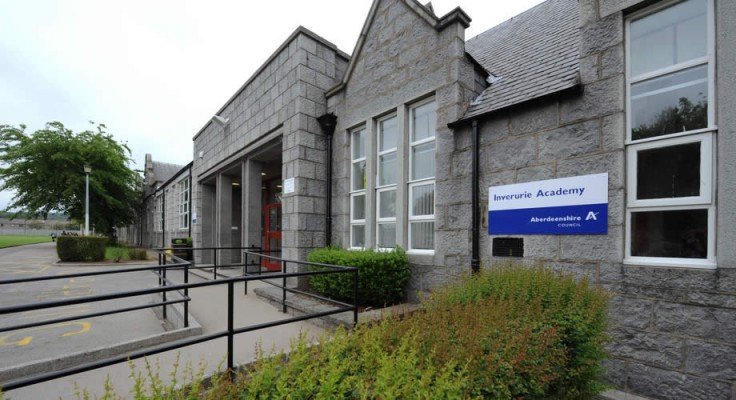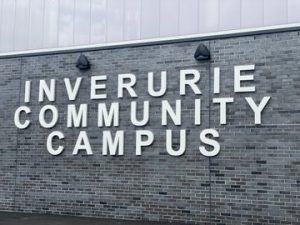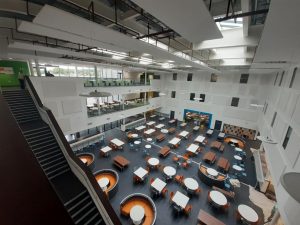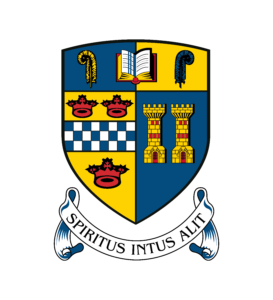School History & Crest

Inverurie Academy has a rich history and heritage. Although we are delighted now to be part of the new Inverurie Community Campus, there is every intention that this rich heritage goes with us into this exciting future.



History
The first Higher Grade school was opened in 1909 with the title of Inverurie Academy. At that time the school existed as 2 separate buildings; one a primary school which took students up to the then statutory leaving age of 14 and the other a secondary school which took those students who had passed their ‘qualifying’ exam up to the age of going to go to further education. The secondary school Assembly Hall can still be identified in the current Science corridor. The remaining vaulted roof of the primary Assembly Hall can be seen outside the current senior common room. They remained that way until they were joined in the 1950s and finally amalgamated in the 1960s by the building of the current Assembly Hall. The two buildings can still clearly be seen in the present facia of the building. At this time the large extension which now houses Modern Languages, Social Subjects and English were also completed. The final phase of building at the Academy was completed in the 1980s when the extension which now houses IT, Home Economics and the Library was added.
The Academy has always been a comprehensive school serving all the youngsters of the community. At one stage the Academy also incorporated the senior primary classes for the town, primary 5, 6 and 7 variously occupying the old soup kitchen, the scout hut, and the old hospital building. As the only senior secondary in the area its catchment zone extended from Donside to the boundaries of Aberdeen. With reorganisation in the 1980’s Alford became a 6th year secondary and the junior secondary schools at Insch and Kintore closed. Kemnay Academy opened in 1980 and students from Kintore and Kemnay left Inverurie Academy to attend the new Academy. In 2002 another new academy was built at Oldmeldrum and again students from that area left Inverurie Academy. Because of these various building programmes, the roll of the school has fluctuated from approximately 1500 pupils to about 900.
Former students of the Academy can be found all over the world in positions ranging from professors to newspaper editors to world sport champions.

Inverurie Academy Crest
We are exposed to it every day! More than once it may be added. Yet none of us probably take the time to look at it in any great detail and wonder how old it is, or why it came to be that way. It’s a bit like money; we see it every day and some of us are fortunate enough to handle it on a regular basis. But how many of us can say which famous person, other than the queen, appears on the back of a five, ten or twenty pound note?
What am I talking about? I am talking about the Inverurie Academy school crest of course. Like money we see it almost every day, but I am sure very few can confidently say what is actually on the badge. This article attempts to shed some light on the school crest i.e. how old it is, the symbols on the badge and finally, what it all means.
The Inverurie Academy badge was matriculated or registered with the office of the Lord of Lyon on the 4th April 1950. It appears in the “Public Register of all Arms and Bearings in Scotland”, which contains an official copy of every coat of arms granted in Scotland since 1672.
The motto of the school Spiritus Intus Alit appears under the badge. For those who are a bit rusty on their Latin, it translates to “The spirit within sustains”, and not, according to some folk, “a wee drappie inside keeps yer going”!
In an extract from the matriculation document, a heraldic description of the crest can be found:
Videlicit: parted per pale, dexter, or a fess chequy Argent and Azure between three open crowns; Gules; sinister, Azure, two castles in fess or, masoned sable, windows and portcullis Gules; on a chief per pale Azure and or, an open book proper between two quills in pale counter changed.
If your first language is not heraldic here is an explanation of some of the words that appear in the heraldic description:
Azure– Blue; Gules – Red; Sable– Black; Argent – Silver or Gold (all colours that appear in the badge) Pale– A band placed vertically in the middle of a shield; Fess– Horizontally; Chief – Upper part; Counter changed– Applied to a field.
If you look closely at the colour poster of the badge in your classroom you will see two quills in the upper part of the badge that shows that Inverurie Academy is a co-educational school for boys and girls. The lighter coloured quill represents the girls, and the darker quill the boys. The two are united through education, represented by the open book. The two towers on the right of the lower part represent the two ancient seats of power which protected the Garioch, namely the Mormaers of Mar and the Earls of the Garioch. The colours red and gold are the colours of the Earl of Garioch and blue and gold are those of Mar. The blue and silver chequered section, together with the three crowns, represent the arms of the Earl of Garioch. This also features on the arms of Alexander Stewart, husband of Isobel, Countess of Mar and Lady of Garioch.
I hope you now know more about the history of Inverurie Academy’s school crest. Now when anyone asks you about its history, you can enlighten them with your new found knowledge of the school crest.
You should be proud to be a student attending an Academy that has been educating boys and girls from the local area for over 110 years.
Remember our school motto Spiritus Intus Alit.

